How war with North Korea could start and what it would look like
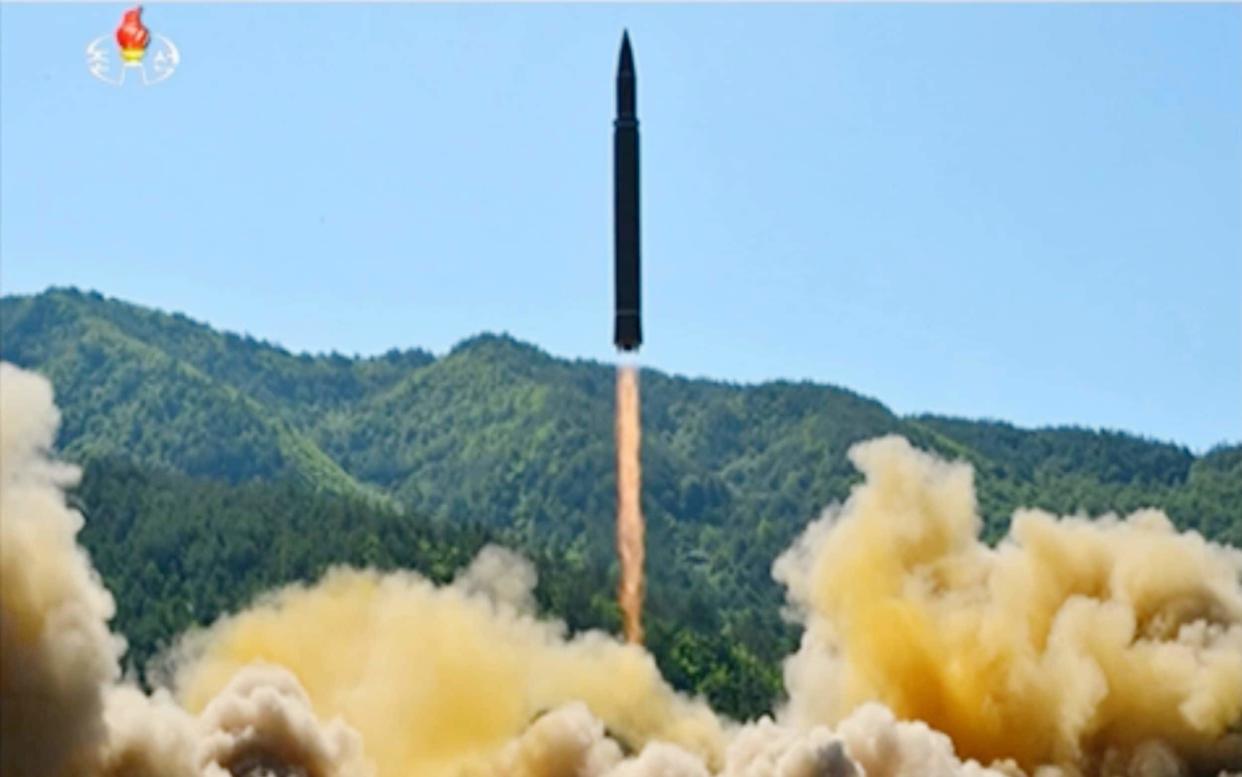
North Korea has frequently warned that a full-scale conflict is about to break out on the Korean Peninsula - and with belligerent comments coming from both Pyongyang and Washington DC in recent months, that possibility may be inching closer.
What was previously dismissed as wild rhetoric, the nightmare scenario become significantly more likely after North Korea carried out two test launches of intercontinental ballistic missiles in June.
The crisis deepened with Pyongyang reacting to the latest sanctions imposed by the United Nations Security Council by threatening to subject the US mainland to "an unimaginable sea of fire".
In response, US President Donald Trump warned in a televised address that North Korea would be met with "fire and fury like the world has never seen" after a US intelligence assessment concluded that Pyongyang has been able to miniaturise a nuclear warhead to fit atop an ICBM.
Ignoring Mr Trump's threats, North Korea fired a missile over Japan on August 29 and then conducted its sixth and most powerful nuclear test.
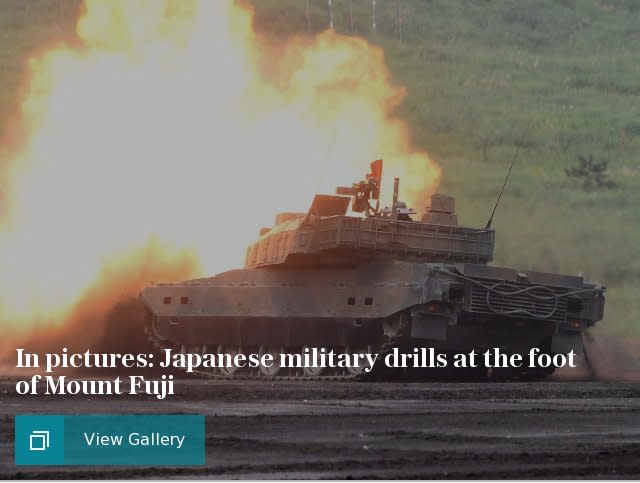
Escalating tensions further, North Korea fired another intermediate range ballistic missile over Japan in September.
A pause in tests was broken on November 29 when the rogue state launched its most powerful weapon yet - a presumed intercontinental ballistic missile that could put Washington and the entire eastern U.S. seaboard within range.
Attack on Guam
North Korean ballistic missiles have sufficient range to cover the 2,100 miles to Guam, although there are still questions about their accuracy and whether nuclear-armed missiles are able survive re-entry.
Pyongyang would be keen to target Guam as its military air and naval facilities make it a key element in any US operations against North Korea, including resupplying ground forces on the Korean Peninsula in the event of a conflict breaking out.
Despite Pyongyang's claims, analysts believe that an unprovoked attack on Guam is "extremely unlikely" because of the inevitable response from Washington.

"If the North launched any sort of attack against Guam, that would be a red line crossed and would be considered by the US to be an act of war," said Garren Mulloy an associate professor of international relations at Japan's Daito Bunka University.
"If they launched ballistic missiles - and especially if they used nuclear weapons - then I imagine the US would reply with targeted nuclear strikes against the North's nuclear facilities or such a vast conventional strike that it would have the same result", he said.
How many people are at risk?
Analysts have devised a number of scenarios of how tensions might develop into a conflict that would devastate the peninsula and, potentially, neighbouring countries such as Japan.
A conventional war could cost the lives of one million people, according to some estimates, although that figure would rise sharply if either side resorted to weapons of mass destruction.

The three most likely scenarios are a limited pre-emptive attack by the US, a first strike by the North, and a sudden escalation of a minor clash into more generalised fighting.
There is little reason to believe that the outcome of any of the three scenarios will be anything other than devastating, said Daniel Pinkston, a professor of international relations at the Seoul campus of Troy University.
Will the US attack North Korea?
"The idea of a pre-emptive strike to degrade the North's growing nuclear capabilities was considered by the US back in 1993 and 1994, but they decided against it at the time and I think it would be even harder for such an attack to work today", Mr Pinkston told The Telegraph.
"The North Koreans have learned to disperse their assets, they are using hardened shelters and it would be very difficult to eliminate all those targets", he said.
There is also a high possibility that not all of the North's military facilities have been identified, while road-mobile tractor-erector-launcher vehicles for missile launches make it harder to track all the North's weapons.
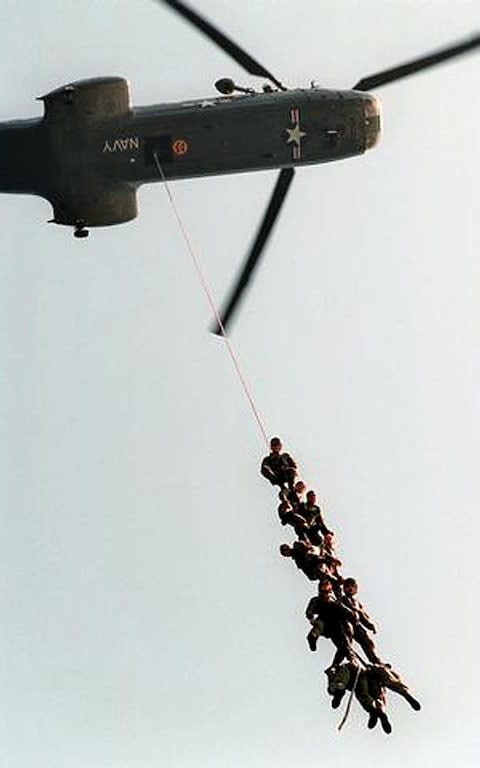
Diplomatically it would be almost impossible for the US to secure international support. China, Pyongyang's main ally, and Russia hold veto votes in the UN Security Council, while South Korea and Japan would likely oppose such an attack as they would bear the brunt of any immediate retaliation.
And while the US could take unilateral action on the grounds of self-defence, Pyongyang would be unlikely to consider surgical strikes against its long-range missiles as anything other than a declaration of war.
"They would see it as a full-scale attack and use everything that they have at their disposal to avoid their complete destruction", Mr Pinkston said. "And that is why I believe that the 'cure' of a US first strike would be worse than the disease".
What if North Korea attacks first?
The second scenario envisages a sudden attack by the North, most likely if it believes its enemies are planning an attack or an attempt at regime change. One credible belief is that Kim Jong-un, the North Korean dictator, would rather go down fighting than be deposed and forced into exile, even if that meant widespread death and destruction.
An estimated 10,000 artillery pieces and rocket launchers are aimed at Seoul, home to 10 million people and a mere 35 miles away. The North would attempt to move troops through tunnels that have been excavated beneath the demilitarised zone, land commando units in the South by submarine, and activate thousands of its sleeper agents who have infiltrated the South.
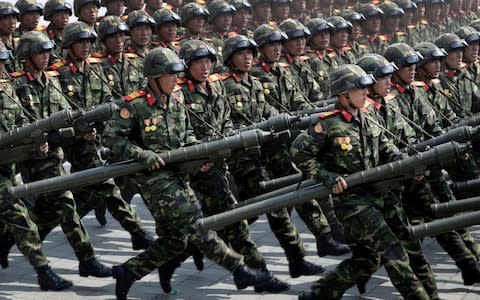
US military planners believe the North would initially attempt to physically overrun the South's defences by sheer numbers. South Korea has some 660,000 men under arms, while there are also 28,000 US troops stationed in the country. The North, in contrast, has more than 1 million men and women ready to fight.
While it has greater manpower, the North is at a significant technological disadvantage and war planners estimate the North's juggernaut would be blunted after about four days of fierce fighting. The US would carry out extensive missile attacks against the North's command-and-control capabilities, while Kim Jong-un and senior military officials would also be targeted in the hope their deaths would damage the morale of the troops.
The US let it be known earlier this year that the SEAL team that killed Osama Bin Laden was training in South Korea for interdiction and "decapitation" operations.
Could North Korea use WMD?
What concerns war planners most is North Korea's response if defeat appeared inevitable. Would it take a conventional conflict to the next stage?
North Korea has already tested nuclear weapons and many analysts surmise that it has already achieved the miniaturisation of components required to attach a warhead to a missile. Short-range missiles could be launched at troop concentrations or civilian centres in South Korea and Japan, both to cause chaos but also to interfere with the resupply and reinforcement of ground units.
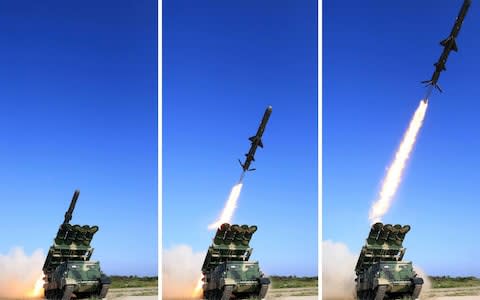
The North is also believed to have significant stockpiles of chemical weapons, including weapons that can be delivered by artillery shells. A number of reports that the regime has developed biological and bactereological weapons have not been confirmed.
The use of any weapon of mass destruction by the North would meet a devastating reply aimed at any remaining targets, but the damage would already have been done.
What is most likely scenario for war?
For Mr Pinkston, the third scenario is the most likely route to war on the pensinsula. "The biggest threat, I believe, is an accident, a miscalculation or a misunderstanding escalating very quickly", he said. "If, for example, one of the North's missile test launches went wrong and was heading for South Korea.
"The South would immediately see that as an attack and would have to respond, which would lead to escalation on both sides", he said.

"Similarly, the North could interpret some new joint exercise in the South as being a prelude to invasion and respond.
"Both sides are presently on hair triggers and it would not take very much at all for a misjudgement to lead to a high number of casualties and a great deal of destruction", he added.
What is North Korea's missile range and can it hit the UK?

 Yahoo News
Yahoo News 
